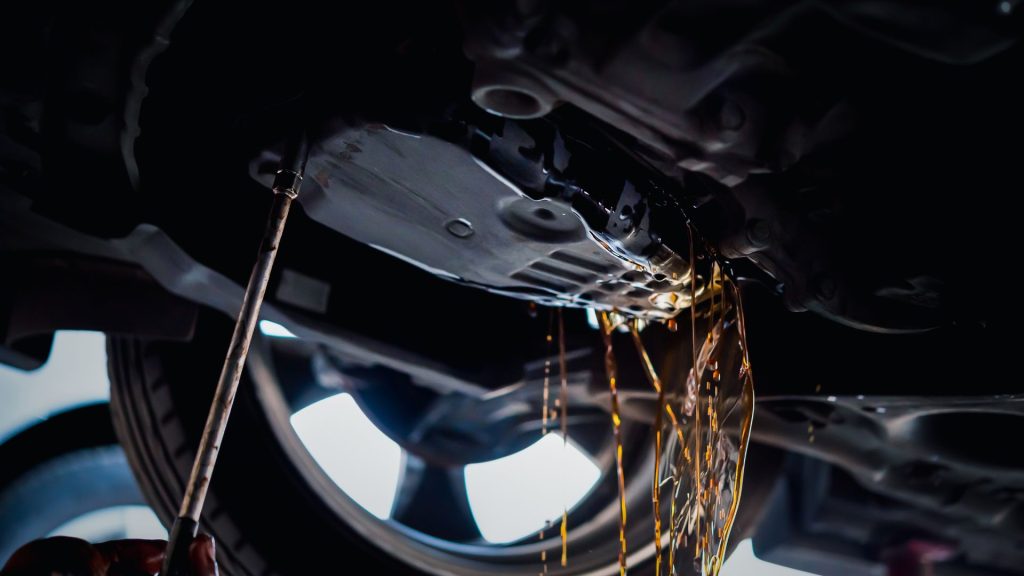How much transmission fluid do I need?
Determine the required amount of transmission fluid for your vehicle.

Correct transmission fluid usage is one of the essential things to know as a car owner. Failure to pay attention to the proper use of transmission fluid results in transmission replacement and repairs or a malfunctioning vehicle. Adding too much transmission fluid to your car can be pretty harmful.
So, how much transmission fluid do you need? It is highly recommended that you check your car’s manual to identify the particular type of fluid to use for your car. This will prevent damage from occurring in your vehicle. Changing your car’s transmission fluid is another basic procedure, as it is a standard part of every vehicle maintenance schedule.
How often you change the transmission fluid depends on your vehicle type and driving habits. However, most manufacturers recommend changing your transmission fluid every 50,000 to 100,000 miles.
How much transmission fluid should you add to your vehicle?

The transmission fluid acts as a lubricant that ensures your car runs smoothly. It works mainly on the transmission, whose components generate friction as they move while the vehicle operates. Transmission fluid does not only serve as a lubricant; it also protects metal surfaces from wear, assists in controlling the vehicle’s temperature, conditions the gasket, and helps in increasing the rotational speed.
Typically, it would be best to pour about half a quart of transmission fluid at a time. The dipstick can show that it is full even when it is not. Start your engine and let it run for about five minutes before rechecking the transmission fluid level through the dipstick.
The quantity of transmission fluid depends on whether you are replacing, draining, or topping it up. The transmission fluid takes about 9-13 quarts to fill up the transmission. It is recommended to put in small amounts at a time to avoid adding too much. Of course, frequent topping-up might indicate low transmission fluid symptoms and that could lead to potential trouble.
If your transmission fluid is deficient, check if there are leaks before adding more fluid. Then place your vehicle gear in the park position and activate the handbrake if you are running the engine while topping up the transmission fluid to prevent the vehicle from moving.
To ensure your vehicle’s transmission operates optimally, use a transmission fluid recommended by your car’s manufacturer’s manual.
How to check the transmission fluid level
To determine the transmission fluid level, you must know where the dipstick and the transmission are. Do not confuse the transmission dipstick with the engine oil dipstick. The transmission dipstick for rear-wheel drives is located at the back of the engine and rear of the firewall, while the ones for front-wheel drives are found at the front of the engine.
The position of the dipstick varies in some vehicles, and you should go through the operator’s manual to know the dipstick’s location. The following are steps to follow to check the level of the transmission fluid.
- Remove the transmission dipstick from its seat and wipe off the fluid with a cloth.
- Dip it inside the transmission case and pull it out again.
- You will see the current level of the fluid in the transmission case.
- Compare it with the cold and hot marks on the dipstick.
- To determine how much transmission fluid you will need to add, check if the current level is located near the hot or cold mark of the dipstick.
How much transmission fluid does your vehicle need?
The amount of transmission fluid to pour into your vehicle depends on the following factors.
- Fluid is low on the dipstick — when the transmission fluid is low on the dipstick, refill one-half quart to one quart at a time. Then dip the dipstick into the transmission case to check if the fluid is enough. If it isn’t, pour another one-fourth quart or less.
- If you are changing the fluid — if you want to change the transmission fluid completely, it can take up to 12 – 16 quarts of transmission fluid to replace the old one.
- If you are servicing the transmission — bringing your vehicle to an auto repair shop for transmission service will require 4 – 5 quarts of transmission fluid. It will help replace the fluid lost while servicing the transmission.
How to add transmission fluid
Before adding the transmission fluid, you will need to warm up the engine because the fluid needs to be heated up to perform at its maximum efficiency level. If your vehicle has no dipstick, you can bring it to a mechanic to check and refill the transmission fluid.
If your car has a dipstick, then you can carry it out yourself. Some of the steps that you can follow to add transmission fluid to your vehicle include the following;
1. Check the operator’s manual
Your car’s operator manual will show you the correct transmission fluid and level you should use for your vehicle. It will also show if there are special instructions you should follow when adding the transmission fluid. Some of these include;
- How often should you change your transmission fluid? It is still appropriate to add fluid when you think it is lacking. However, most manufacturers recommend changing transmission fluid every 30,000 to 100,000 miles. It depends on the type and model of your vehicle.
- It also gives insights into how the dipstick in the transmission case will show you the type of transmission fluid that your car requires.
2. Start and keep the engine idling
Put the gear in neutral and turn on the parking brake and the ignition key. Keep your engine running for 5 minutes before starting the process.
3. Remove the dipstick
Remove the dipstick from its position in the transmission case.
4. Place a funnel in the dipstick hole
There is a specific funnel you can use for this purpose. Place the open end of the funnel on the dipstick hole.
5. Pour the transmission fluid
Pour in the fluid inside the transmission case. Do so in a small amount to avoid overfilling the case.
6. Depress the brake
Step on the brake and run the transmission through its gear while your car is idling. This will help circulate the transmission fluid. It will ensure that you get the correct reading on the dashboard.
7. Check the fluid level
It is crucial to recheck the transmission dipstick to see if you need to add more transmission fluid. If there is a need, add the fluid in small amounts since your car will require a small amount to top up completely.
8. Restore the dipstick to its position
Place the dipstick back in its position and ensure it is deeply seated. You may have to press down the latch on the top or turn it until it locks securely in its place.
Why is too much transmission fluid wrong?

The transmission proximity to the engine and the movement of the components generate heat. Too much transmission fluid in your vehicle can compress the mechanism of the transmission and cause a lot of problems.
The amount of transmission fluid depends on the make and model of your vehicle. Some problems that result from too much transmission fluid cause include;
- Transmission fluid leak
- Hard gear shifts
- Transmission overheating
- Noises from the transmission
- Slipping transmission
A transmission leak is one of the most common problems associated with too much transmission fluid. A transmission is a sealed unit, and if it becomes over-pressurized, it will fail. A damaged transmission is a severe and expensive problem to fix.
Adding too much transmission fluid will put pressure on the gears causing transmission slipping, head shifts, and even usual noises from the transmission. You can also experience overheating because the extra stress and frothing of the transmission fluid will not provide adequate cooling.
Why is too little transmission fluid harmful?
Too much transmission fluid is as bad as too little amount of it. The symptoms of deficient transmission fluid are almost the same as that of too much fluid. To determine which of the two issues you are experiencing, check the transmission dipstick. When you are experiencing a lacking transmission, you will notice the following.
- Gear slippage
- Transmission fluid leak
- Transmission overheating
- Grinding gear shifts
- Noises coming from the transmission
Little transmission fluid leads to the dissipation of heat and insufficient lubrication. Your gears will brittle and wear out faster without adequate lubrication. To avoid this, it’s essential to know how often to change the transmission fluid and to maintain frequent checks.
Excessive heat can be catastrophic, as prolonged driving with an overheated transmission can lead to severe failure. The heat can warp vital components and make the gasket brittle and leak. It is essential always to top off your transmission fluid to avoid harmful results.
Our take
Before refilling your transmission fluid, you should ensure that your car’s service manual recommends the fluid you would use. If you feel that the transmission fluid is insufficient in your vehicle, you should add about a one-half quart, and if the transmission case is wholly drained, pour in 4-12 quarts of transmission fluid to fill it up.
How do I know how much transmission fluid I need?
The amount of transmission fluid you can add to your vehicle depends on if you are replacing or draining the fluid. It is essential to check your car’s operator manual to know the appropriate amount of transmission fluid to use.
How much transmission fluid does a car take?
Most cars can take in between 12 to 16 quarts of transmission fluid. It usually varies on the make and model of the vehicle.
What are the symptoms of low transmission fluid?
Some of the symptoms of low transmission fluid include; transmission overheating, transmission leaks, grinding noise, slipping transmission, and high fluid levels on dipsticks.
How much transmission fluid should I add at a time?
It will help if you put in about half a quart of transmission fluid at a time. Check your service manual for better measurement.